My travels across the tribal regions of Gujarat have brought me back to the desi varieties of makai. Makai is a staple to the eastern belt of Gujarat, which now grows only two types of desi Makai – yellow and white; the speckled ones I have seen make me wonder about the presence of others.
The Desi tender-milky Makai, or bhutta as they are often called, have been an integral part of our monsoon cuisine; their arrival is celebrated and enjoyed with gusto, be it coal-roasted corn on the cob or turned into chevdo/khichdi/kheech, cutlets, curries, handvo, Dhokla, bhajia/fritters, puri, puda and much more… Makai dishes were a charm of parties and family gatherings.
While for the Adivasi tribes who actually grow the native varieties of maize, the ways to consume it remain primal and frugal, that too once it dries up and turns into a cereal grain. To these tribes, maize equals food security, and each family tends at least a small patch for its own consumption. Only the excess produce is sold or bartered. Makai is revered (more on that later), and each part of the crop is used with respect.
The rains arrived early this year, while the seasonal produce followed a natural schedule. I have patiently awaited the arrival of tender desi bhutta this monsoon to recreate some traditional favorites.
After the Handvo it was the turn of Desi makai in a dhokla… one of the best Dhokla I have eaten. These are seriously good. Trust me. And they are old school, meaning overnight fermented. Nothing instant about it. The meethash/sweetness of desi makai balances the khatash/sourness overnight fermentation brings. The faint and sweet aroma of heirloom small-grained rice (broken Krishna Kamod here) that fills up the air as this Dhokla steam is unbeatable (makes me understand why my mummy always insisted on Krishna Kamod rice for the Dhokla-Handva flour she made at home). The texture of coarsely ground/grated desi makai/maize lends this Dhokla a nice bite, so while they still have a very tender crumb, they won’t melt in the mouth. And it keeps you satiated for a long time!
I love these efforts to revive our foods’ lost flavors and fragrances. The elders in my family quickly recognize the aromas that waft through the kitchen and relate it to old times. I beam with joy; I know what it takes to recreate that magic and this journey has been worth it…
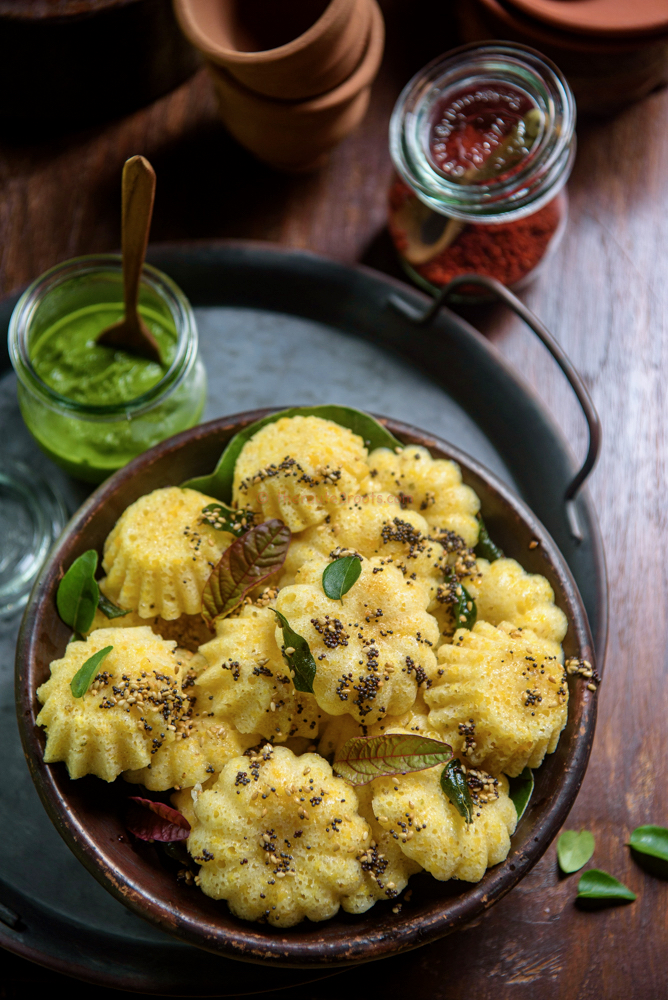
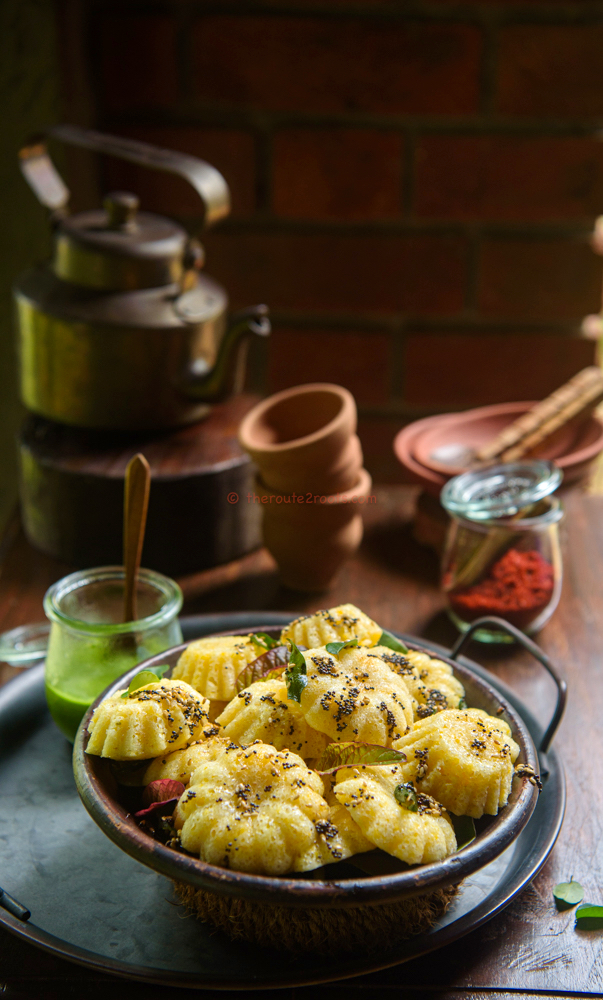
Desi Makai na Dhokla
Ingredients
- 4 cups grated corn
- 1+1/2 cups rice, small grained aromatic, broken/kanki is better
- 1 cup sour yogurt
- 2-3 teaspoons ginger and garlic paste
- Salt to taste
- 1 teaspoon eno fruit salt
- 3 tablespoon groundnut oil
- 1 teaspoon rai/mustard seeds
- 1 teaspoon sesame seeds
- 1/4 teaspoon hing
- 1 spring curry leaves
- shredded coconut
- chopped coriander
Instructions
Wash and soak the rice for 3-4 hours after which drain it and grind it to coarse Rawa like consistency. You don't want to grind it to a fine paste, but get it to a coarse consistency. You can add sour couple of tablespoons of yogurt as grinding liquid.
Transferr the ground rice into to a bowl, add some yogurt to get it to a paste like consistence. Don't add too much yogurt as we do not want to make it a runny batter.
Ferment the rice batter for 7-8 hours.
Meanwhile an hour or two before you intend to steam the dhokla; grate the corn. If the corn is not tender enough and you get too many whole kernels while grating, pulse the grated corn couple of times in an electric mixer-grinder.
Prepare a steamer, and steam the ground corn until it has almost cooked. You do not have to boil it, steam it without water touching the ground corn. The Desi corn steam really well.
It takes 10-12 minutes for not so tender corn to steam to desired liking.
Allow the grated steamed corn to cool completely.
Mix in the steamed and cooled corn into the fermented rice batter.
Add some sour yogurt to adjust the consistence of the batter. It has to be like idli batter consistency. Add 1/2 tablespoon oil, salt, ginger+garlic paste, if required add a teaspoon of sugar to balance the sourness of the batter.
Allow the batter to rest for 15-20 minutes so that the flavours get the time to blend in.
Prepare the Dhokla steamer and grease the dhokla plates.
Pour some batter into a mixing bowl. Add 1/4 teaspoon of eno fruit salt, pour a teaspoon of water over it and mix it well. Immediately transfer the batter into the greased plate, level it and steam for 10-12 minutes.
Check for doneness, remove from the steamer and allow the dhokla to rest for few minutes, this allows the crumb to set as the dhokla will continue to cook until they cool down.
Repeat with the rest of the batter.
Prepare the tempering by heating 2 tablespoons oil, add mustard and sesame seeds and turn off the flame as they crackle. Add hing and curry leaves . This tempered oil is enough for the entire batch of dhokla. After you have sliced the dhokla, spread little over each plate of steamed dhokla.
Garnish with grated fresh coconut and finely chopped coriander.
Serve warm with coriander chutney.


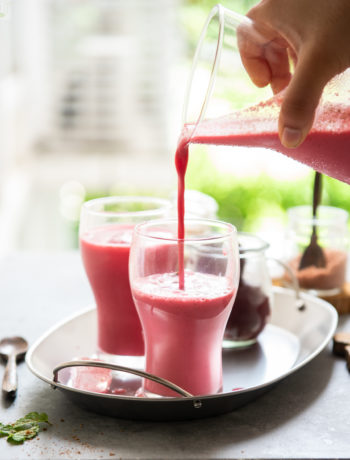
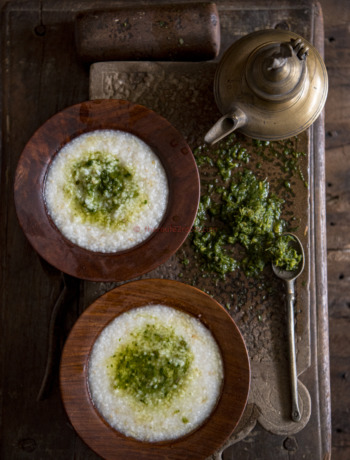
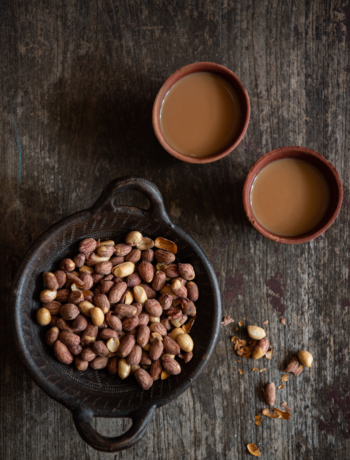
No Comments